#Tracy and Laura Hickman
Text

The commander of a large mounted force "invites" the party to join a quest on his king's behalf (Jim Holloway, from AD&D module I3: Pharaoh, 1st module in the Desert of Desolation series, written by Tracy and Laura Hickman, TSR, 1982)
#D&D#Dungeons & Dragons#Jim Holloway#AD&D#dnd#Pharaoh#guards#adventuring party#Tracy and Laura Hickman#railroading#Dungeons and Dragons#TSR#1980s
83 notes
·
View notes
Text
403. Tracy and Laura Hickman - DL8: Dragons of War (1985)
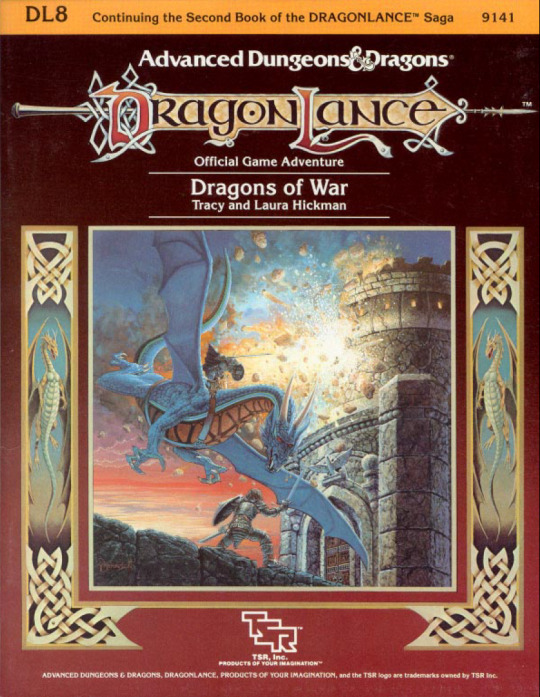
Focused around the last part of the story retold in Dragons of Winter Night, the battle at High Clerist Tower, this 8th Dragonlance module makes heavy use of the new Battlesystem wargaming rules to bring to life epic battles.

This module is also, due to its setting, really heavy on the whole Knights of Solamnia lore, including a section before the adventure with two pages about the workings and structure of the order which will be of great use for any DM trying to bring the Solamnic fortress to life.

Most spectacular of all is the fantastic map for the tower that is included here, not only do we get a hex map for use with Battlesystem we also get an astounding map with the cross sections of all the floors of the tower in what is a work of art in itself. Fantastic module.

#adnd#dnd#ttrpg#ad&d#d&d#dnd art#dungeons and dragons#dungeons & dragons#dragonlance#tracy hickman#laura hickman
24 notes
·
View notes
Text


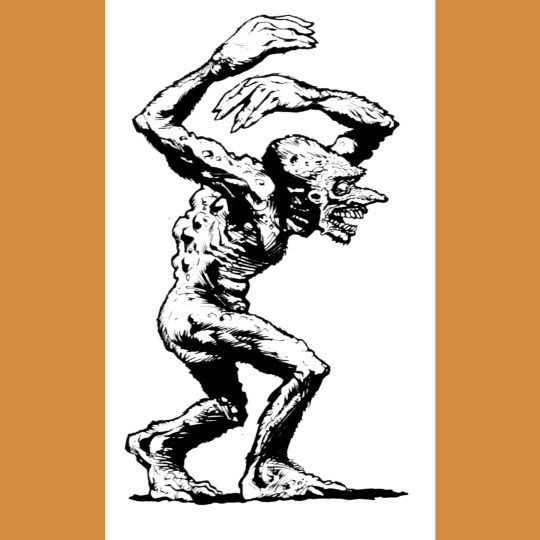

Desert of Desolation (1987) is another supermodule, collecting the well regarded trilogy of Egyptian adventures, I3: Pharaoh, I4: Oasis of the White Palm and I5: Lost Tomb of Martek. These were initially conceived as a trilogy by Tracy and Laura Hickman and Philip Meyers, so collecting them together under one cover was a good choice. Sticking them behind that gorgeous Keith Parkinson cover painting was another inspired decision. William John Wheeler, who compiled the book, also took great pains to increase its usability. Not that the originals were bad, this book just makes conscious decisions about organization that I don’t think were on folks minds back in ‘82 (and really, as some of the first narrative-focused modules, the originals broke plenty of ground already).
What’s weird is that this book is retrofitted into the Forgotten Realms. It is, in fact, the first RPG product to bear the FR logo (Darkwalker on Moonshae, Douglas Niles’ novel, debuted the label; the box set would appear a month later). Even if the logo is on the back (and bears the lie “designed for use with” above it). To accomplish this, a pretty sizable amount of work went into renovating the original modules. For starters, you never got a real view of the setting region as a whole, which is rectified here. There’s a lot of lore and history added in to connect it to the Realms as detailed in the soon to emerge campaign box. Is that necessary? Ehhhhh. Probably not. But it doesn’t really take anything away, not even space — this book feels pleasingly overstuffed. Coupled with its overhaul of scenario presentation, that probably makes this the best of the reprint supermodules.
#roleplaying game#tabletop rpg#dungeons & dragons#rpg#d&d#ttrpg#Desert of Desolation#Keith Parkinson
103 notes
·
View notes
Text
slogging through this fic but real talk? i have not written fanfic in SO LONG. and it feels. SO GOOD. i love you baldur's gate 3 i love you forgotten realms i love you d&d worldbuilding i love you ed greenwood i love you chris perkins i love you r. a. salvatore i love you laura hickman i love you tracy hickman i love you beautiful expansive worlds where all the lore and characters are already made for me
9 notes
·
View notes
Text
Back on my Strahd hyperfocus planning for a possible campaign this summer and am once again annoyed at Tracy Hickman's foreword to CoS 5e.
I'm going to paste it below in full under the cut so no one can say I'm taking it out of context, but I will bold the parts I find especially annoying:
----
We turned the corner, and there was a vampire.
I groaned and rolled my eyes.
It was 1978, and I was playing in one of my first dungeon adventures. It was being run by a friend I had known in high school, John Scott Clegg, and it was typical of the type of adventure that people played in those days. It was all about exploring a hodgepodge collection of rooms connected by dungeon corridors, beating up the monsters that we encountered, searching for treasure, and gaining experience points.
Now we were face to face with random encounter number thirty-four: a vampire. Not a Vampire with a capital V, but a so-many-Hit-Dice-with-such-and-such-an-Armor-Class lowercase vampire. Just another monster in the dungeon.
I remember thinking at the time, What are you doing here? This creature seemed completely out of place with the kobolds, orcs, and gelatinous cubes we had seen thus far. This was a creature who deserved his own setting and to be so much more than just a wandering monster. When I came home from that game, I told all these thoughts to Laura.
That was when Strahd von Zarovich was born.
Strahd would be no afterthought—he demanded his own setting, his own tragic history. Laura and I launched into researching the mythology and folklore surrounding the vampire. We started with the vague, black-and-white image of Bela Lugosi in 1931, but found so much more.
The first "modern" literary foundation of the vampire was penned by John William Polidori based on a fragment of a story by Lord Byron. It was while at the Villa Diodati—a rented house next to Lake Geneva, Switzerland—that Byron and Polidori met Mary Wollstonecraft Godwin and her husband-to-be, Percy Shelley. One night in June, Byron suggested that they each write a ghost story. Mary Shelley's contribution to the effort would later become Frankenstein. The short story "The Vampyre," published in 1819, was Polidori's contribution. He was Byron's personal physician, and the first of the so-called "romantic" vampires under Polidori's hand was actually modeled after Lord Byron.
Byron—like the fictional vampires that he inspired, from Polidori's Lord Ruthven down through the penultimate work of Bram Stoker—was a decadent predator, an abuser hidden behind a romantic veil. He was a comely and alluring monster—but a monster nevertheless. The romantic vampire of the earliest years of the genre was not just a spouse abuser but a spouse killer, the archetype of abuse in the worst kind of destructive codependency.
For Laura and me, those were the elements that truly defined Strahd von Zarovich—a selfish beast forever lurking behind a mask of tragic romance, the illusion of redemption that was ever only camouflage for his prey.
Initially we were going to title the adventure Vampyr—one of a series of games we called Nightventure that Laura and I were self-publishing back in 1978. The castle was called Ravenloft, and when Halloween came around each year, our friends asked us if we could play "that Ravenloft game" again... and so the better title won out. It was, in part, because of this design that I was hired by TSR, Inc., to write Dungeons & Dragons adventures in 1982. Soon thereafter, I6 Ravenloft was published.
Since then, fans of Ravenloft have seen many different creative perspectives on Barovia (a country which, by absolute coincidence, is featured in a 1947 Bob Hope movie called Where There's Life). It continues to be one of the most popular Dungeons & Dragons adventures of all time. In its various incarnations, each designer has endeavored to bring something new to the ancient legend of Strahd, and to each of them we are grateful.
But the vampire genre has taken a turn from its roots in recent years. The vampire we so often see today exemplifies the polar opposite of the original archetype: the lie that it's okay to enter into a romance with an abusive monster because if you love it enough, it will change.
When Laura and I got a call from Christopher Perkins about revisiting Ravenloft, we hoped we could bring the message of the vampire folktale back to its original cautionary roots. The talented team at Wizards of the Coast not only graciously took our suggestions but engaged us in a dialogue that delivered new insights on the nightmare beyond the gates of Barovia.
Now we invite you again as our guests to pass through the Svalich Woods if you dare. For here the romance is tragically dangerous... and a true monster smiles at your approach.
----
It's just so
Patronizing
It would be an entirely different post to talk about the meaning of the vampire figure in folklore and literature and what it represents; because you cannot pin it to simply one meaning. Vampiric folklore can speak of fears of disease and death and plague, Dracula can represent xenophobia AND classism AND sexuality, Polidori's Lord Ruthven can be a high society predator AND an emblem of repressed queerness
But even if Tracy was correct that the vampire has one specific meaning...so what? Why can people not subvert and change the stock characters of fiction? Is there really a problem if Interview with a Vampire turned tropes on their heads? I'm no fan of Twilight but its sin is absolutely not "it made Vampires hot and romantic"
This is especially galling because when you release a ttrpg story or system out into the world, it's going to be changed at every table. For every group that runs a module as is, there are dozens making it their own.
I do think Strahd as written, as a monster who cannot recognize his faults is fascinating. I also think there are a lot of possibilities to mine if you have a table who likes romance and intrigue. My most frequent table plays a lot of Good Society and they get very excited when similar options show up in other systems.
And, honestly, at the end of the day Tracy just sounds like every guy whining that they made vampires sparkly and those aren't reaaalll vampires and every internet user handwringing over oh no there are people who find villains hot
3 notes
·
View notes
Text
...And Now
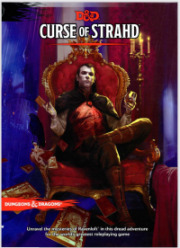
...For Laura and me, those were the elements that truly defined Strahd von Zarovich--a selfish beast forever lurking behind a mask of tragic romance, the illusion of redemption that was ever only camouflage for his prey.
Initially we were going to title the adventure Vampyr one of a series of games we called Nightventure that Laura and I were self-publishing back in 1978. The castle was called Ravenloft, and when Halloween came around each year, our friends asked us if we could play "that Ravenloft game" again ... and so the better title won out. It was, in part, because of this design that I was hired by TSR, Inc., to write DUNGEONS & DRAGONS adventures in 1982. Soon thereafter, 16 Ravenloft was published.
Since then, fans of Ravenloft have seen many different creative perspectives on Barovia (a country which, by absolute coincidence, is featured in a 1947 Bob Hope movie called Where There's Life). It continues to be one of the most popular DUNGEONS & DRAGONS adventures of all time. In its various incarnations, each designer has endeavored to bring something new to the ancient legend of Strahd, and to each of them we are grateful.
But the vampire genre has taken a turn from its roots in recent years. The vampire we so often see today exemplifies the polar opposite of the original archetype: the lie that it's okay to enter into a romance with an abusive monster because if you love it enough, it will change.
When Laura and I got a call from Christopher Perkins about revisiting Ravenloft, we hoped we could bring the message of the vampire folktale back to its original cautionary roots...
I would entirely sympathize with “people are treating or writing Strahd, this character we created, with a degree of sympathy that suggests they misunderstood the original character.” I roll my eyes at efforts to pretend that famous vampires like Dracula, Carmilla--and Strahd--can be divorced from sexual predation without ripping the core out of their myths. I have much less sympathy for “everyone must write vampires as one-dimensional monsters.” Twilight is, of course, the easiest of easy targets (and if there was any ambiguity in what Hickman was getting at, Tracy and Laura Hickman’s personal blog has an old post titled, “Will The Real Vampire Please Stay Dead?” with the caption, “VAMPIRES real ones don’t sparkle...The End”), but older works than that have presented vampires who are not simply one-dimensional monsters.
However, staying focused on this one vampire as Hickman really should have, Strahd is still the epic villain he was since he was introduced, right? Well...
The nature of Strahd’s curse and his existence were described in my last post. Strahd tried to own Tatyana because that’s the sort of person he is, alive or undead. Strahd made a pact with a mysterious entity which causes Tatyana to be brought back to him again and again, so he can fail to win her love, which is his obsession.
Curse of Strahd, on page 25, explains that Barovia is a closed system. Anyone who dies there is reincarnated. Any time an infant is born there without a formerly-dead-person’s soul waiting to inhabit the new body, that person simply has no soul, because an infant only has a soul if that soul is reincarnated from someone who died there. Tatyana is not specifically brought back because of her ties to Strahd, but reincarnated like everyone who dies in Barovia. Strahd is not obsessed with causing her to feel things for him that she never could; rather, he will tell PCs who ask that Tatyana’s soul belongs to him, and if the adventure ends with the PCs’ defeat and Tatyana’s current reincarnation without Strahd’s reach, he simply turns her into a vampire spawn and puts her in one of the crypts below Castle Ravenloft. In Vampire of the Mists, Strahd yells at his murder victim, blaming his actions on Sergei, and protests at the denouement that he loved Tatyana. In Curse of Strahd, “He feels neither pity nor remorse, neither love nor hate. He doesn't suffer anguish or wallow in indignation. He believes, and has always believed, that he is the master of his own fate. When he was alive, Strahd could admit to letting his emotions get the better of him from time to time. Now, as a vampire, he is more monster than man, with barely a hint of emotion left. He is above the concerns of the living. The only event that occasionally haunts him is the death of Tatyana, but his view of the past is bereft of romance or regret. In his mind, her death couldn't have been prevented, and what is done cannot be undone.“
Curse of Strahd describes Strahd as having made a pact with “the Dark Powers of the Shadowfel,” but it also features a section, in the Amber Temple, where the PCs can discover a number of vestiges, each offering boons at a terrible price. One of them offers the “dark gift of the Vampyr” to any humanoid creature of evil alignment, requiring that person to kill someone who loves them and drink their blood, and then be killed by someone who hates them, requirements the module writer unambiguously based on Strahd’s murder of Sergei and subsequent death at the hates of the castle guards. Thus is all the mystery dispelled. This version of Strahd did not accept a pact he did not realize would not give him his heart’s desire: far more prosaically, he followed a recipe to become immortal, knowing exactly what the result of his actions would be.
What kind of man was Strahd in life? In previous works he repeatedly says that he was good and just, but of course he is always an unreliable narrator. In the Roots of Evil module, the PCs travel through time and briefly meet the living Strahd, whose listed stats describe him as Lawful Good, but this is only one interpretation. In Curse of Strahd, there is, again, no mystery: he is repeatedly described in omnipotent voice as a brutal conquerer, and, of course, his immortality recipe would never have been offered to him if he was not evil-aligned when he came to the Amber Temple.
The Fifth Edition D&D Monster Manual entry on vampires has this to say: “Whether or not a vampire retains any memories from its former life, its emotional attachments wither as once-pure feelings become twisted by undeath. Love turns into hungry obsession, while friendship becomes bitter jealousy. In place of emotion, vampires pursue physical symbols of what they crave, so that a vampire seeking love might fixate on a young beauty.”
So are all the pieces of Strahd’s dark fate separated and laid out. He is a vampire, because he followed a specific formula of which the result is becoming a vampire. Tatyana is reincarnated over and over, because people who die in Barovia are. He is incapable of love not because of the all-consuming selfishness of the choices he made previously and reaffirms every day, but because vampires are. It seems clear to me that the whole which exists in portrayals of Strahd prior to Curse of Strahd was far more than the sum of the parts which exists in Curse of Strahd.
Annoyance at a vampire having too few motivations caused Tracy and Laura Hickman to turn Random Encounter #34 into an epic villain. Annoyance at other people writing vampires with too many motivations caused them to turn an epic villain into Dungeon Boss #34.
9 notes
·
View notes
Text
I can't believe I'm actually doing a tag game on Tumblr, but I do be liking @ranger-kellyn so here goes:
3 ships: Benedikt Montagav & Marshall Seo from These Violent Delights (my boys! my sons! let them be happy!). Regina Mills & Robin Hood from Once Upon a Time (Regina's happy ending doesn't have a romance in it, but by the fairy, she's fucking WANTED one!). Holland Vosijk & A Damned Break from Shades of Magic (just let that poor man have a vacation, shit).
First ever ship: There's been couples I've liked together before this, but by season 3/4 I wanted nothing more than for poor FitzSimmons to have a moment of peace. Like. Let them FIND OUT if they want to be a romantic couple or remain platonic. Let them rest! And then the second the characters decided that "yes, I'd like to try," I was 110% on board. Cheering them on amidst disaster. (Wait. I'm sensing a theme. Do I like DOOMED relationships?! These all have someone who looks like they won't make it to the end of the series. Fuck...)
Last song: Looks like I paused in the middle of Stay (Faraway, So Close!) by U2, but the last full song I heard was the Zombie cover by Bad Wolves.
Last movie: It's a Wonderful Life. Yes, it was Christmas Eve.
Currently reading: Bro, I have.... A LIST. I'm on break and the ADHD can only handle like 10 pages at a time, but I want to read!!! So.... *ahem* Leviathan by Scott Westerfeld, Her Majesty's Royal Coven (audio) by Juno Dawson, The Sword of Kaigen by ML Wang, Wuthering Heights by Emily Brontë, The Grimrose Girls by Laura Pohl, Dragons of Autumn Twilight by Margaret Weis and Tracy Hickman, and four secrets
Currently watching: The Owl House with the besties and Agents of SHIELD with myself. Both of which are to lower my hella high anxiety levels right now.
Currently consuming: water, forced upon me by the aforementioned besties.
Tags for funsies if you wanna: @thedisassociation @ruthsic @sharvil1
1 note
·
View note
Text
What are you talking about? I love all the campaign settings! Forgotten Realms, Greyhawk and...*checks smeared writing on hand*....Ragon’s Plants
#Dungeons and Dragons#d&d#Forgotten Realms#Greyhawk#dragonlance#ed greenwood#gary gygax#Margaret weiss#tracy hickman#laura hickman
14 notes
·
View notes
Text
BOOK RECS
Okay, so lots of people wanted this and so, I am compiling a list of my favourite books (both fiction and non-fiction), books that I recommend you read as soon as humanly possible. In the meantime, I’ll be pinning this post to the top of my blog (once I work out how to do that lmao) so it will be accessible for old and new followers. I’m going to order this list thematically, I think, just to keep everything tidy and orderly. Of course, a lot of this list will consist of historical fiction and historical non-fiction because that’s what I read primarily and thus, that’s where my bias is, but I promise to try and spice it up just a little bit.
Favourite fiction books of all time:
The Mermaid and Mrs Hancock // Imogen Hermes Gowar
Sense and Sensibility // Jane Austen
Slammerkin // Emma Donoghue
Remarkable Creatures // Tracy Chevalier
Life Mask // Emma Donoghue
His Dark Materials // Philip Pullman (this includes the follow-up series The Book of Dust)
Emma // Jane Austen
The Miniaturist // Jessie Burton
Girl, Woman, Other // Bernadine Evaristo
Jane Eyre // Charlotte Brontë
Persuasion // Jane Austen
Girl with a Pearl Earring // Tracy Chevalier
The Silent Companions // Laura Purcell
Tess of the d’Urbervilles // Thomas Hardy
Northanger Abbey // Jane Austen
The Chronicles of Narnia // C.S. Lewis
Pride and Prejudice // Jane Austen
Goodnight, Mr Tom // Michelle Magorian
The French Lieutenant’s Woman // John Fowles
The Butcher’s Hook // Janet Ellis
Mansfield Park // Jane Austen
The All Souls Trilogy // Deborah Harkness
The Railway Children // Edith Nesbit
Favourite non-fiction books of all time
Catherine the Great: Portrait of a Woman // Robert Massie
Love and Louis XIV: The Women in the Life of the Sun King // Antonia Fraser
Madame de Pompadour // Nancy Mitford
The First Iron Lady: A Life of Caroline of Ansbach // Matthew Dennison
Black and British: A Forgotten History // David Olusoga
Courtiers: The Secret History of the Georgian Court // Lucy Worsley
Young and Damned and Fair: The Life of Katherine Howard, the Fifth Wife of Henry VIII // Gareth Russell
King Charles II // Antonia Fraser
Casanova’s Women // Judith Summers
Marie Antoinette: The Journey // Antonia Fraser
Mrs. Jordan’s Profession: The Story of a Great Actress and a Future King // Claire Tomalin
Jane Austen at Home // Lucy Worsley
Mudlarking: Lost and Found on the River Thames // Lara Maiklem
The Last Royal Rebel: The Life and Death of James, Duke of Monmouth // Anna Keay
The Marlboroughs: John and Sarah Churchill // Christopher Hibbert
Nell Gwynn: A Biography // Charles Beauclerk
Jurassic Mary: Mary Anning and the Primeval Monsters // Patricia Pierce
Georgian London: Into the Streets // Lucy Inglis
The Prince Who Would Be King: The Life and Death of Henry Stuart // Sarah Fraser
Wedlock: How Georgian Britain’s Worst Husband Met His Match // Wendy Moore
Dead Famous: An Unexpected History of Celebrity from the Stone Age to the Silver Screen // Greg Jenner
Victorians Undone: Tales of the Flesh in the Age of Decorum // Kathryn Hughes
Crown of Blood: The Deadly Inheritance of Lady Jane Grey // Nicola Tallis
Favourite books about the history of sex and/or sex work
The Origins of Sex: A History of First Sexual Revolution // Faramerz Dabhoiwala
Erotic Exchanges: The World of Elite Prostitution in Eighteenth-Century Paris // Nina Kushner
Peg Plunkett: Memoirs of a Whore // Julie Peakman
Courtesans // Katie Hickman
The Other Victorians: A Study of Sexuality and Pornography in mid-Nineteenth Century England
Madams, Bawds, and Brothel Keepers // Fergus Linnane
The Secret History of Georgian London: How the Wages of Sin Shaped the Capital // Dan Cruickshank
A Curious History of Sex // Kate Lister
Sex and Punishment: 4000 Years of Judging Desire // Eric Berkowitz
Queen of the Courtesans: Fanny Murray // Barbara White
Rent Boys: A History from Ancient Times to Present // Michael Hone
Celeste // Roland Perry
Sex and the Gender Revolution // Randolph Trumbach
The Pleasure’s All Mine: A History of Perverse Sex // Julie Peakman
LGBT+ fiction I love*
The Confessions of the Fox // Jordy Rosenberg
As Meat Loves Salt // Maria Mccann
Bone China // Laura Purcell
Brideshead Revisited // Evelyn Waugh
The Confessions of Frannie Langton // Sara Collins
The Intoxicating Mr Lavelle // Neil Blackmore
Orlando // Virginia Woolf
Tipping the Velvet // Sarah Waters
She Rises // Kate Worsley
The Mercies // Kiran Millwood Hargrave
Oranges are Not the Only Fruit // Jeanette Winterson
Maurice // E.M Forster
Frankisstein: A Love Story // Jeanette Winterson
If I Was Your Girl // Meredith Russo
The Well of Loneliness // Radclyffe Hall
* fyi, Life Mask and Girl, Woman, Other are also LGBT+ fiction
Classics I haven’t already mentioned (including children’s classics)
Far From the Madding Crowd // Thomas Hardy
I Capture the Castle // Dodie Smith
Vanity Fair // William Makepeace Thackeray
Wuthering Heights // Emily Brontë
The Blazing World // Margaret Cavendish, Duchess of Newcastle
Murder on the Orient Express // Agatha Christie
Great Expectations // Charles Dickens
North and South // Elizabeth Gaskell
Evelina // Frances Burney
Death on the Nile // Agatha Christie
The Monk // Matthew Lewis
Frankenstein // Mary Shelley
Vilette // Charlotte Brontë
The Mayor of Casterbridge // Thomas Hardy
The Tenant of Wildfell Hall // Anne Brontë
Vile Bodies // Evelyn Waugh
Beloved // Toni Morrison
The Murder of Roger Ackroyd // Agatha Christie
The History of Tom Jones, A Foundling // Henry Fielding
A Room With a View // E.M. Forster
Silas Marner // George Eliot
Jude the Obscure // Thomas Hardy
My Man Jeeves // P.G. Wodehouse
Lady Audley’s Secret // Mary Elizabeth Braddon
Middlemarch // George Eliot
Little Women // Louisa May Alcott
Children of the New Forest // Frederick Marryat
I Know Why the Caged Bird Sings // Maya Angelou
Rebecca // Daphne du Maurier
Alice in Wonderland // Lewis Carroll
The Wind in the Willows // Kenneth Grahame
Anna Karenina // Leo Tolstoy
Howard’s End // E.M. Forster
The Secret Diary of Adrian Mole, Aged 13 3/4 // Sue Townsend
Even more fiction recommendations
The Darling Strumpet // Gillian Bagwell
The Wolf Hall trilogy // Hilary Mantel
The Illumination of Ursula Flight // Anne-Marie Crowhurst
Queenie // Candace Carty-Williams
Forever Amber // Kathleen Winsor
The Corset // Laura Purcell
Love in Colour // Bolu Babalola
Artemisia // Alexandra Lapierre
Blackberry and Wild Rose // Sonia Velton
The Bloody Chamber and Other Stories // Angela Carter
The Languedoc trilogy // Kate Mosse
Longbourn // Jo Baker
A Skinful of Shadows // Frances Hardinge
The Black Moth // Georgette Heyer
The Far Pavilions // M.M Kaye
The Essex Serpent // Sarah Perry
The Seven Husbands of Evelyn Hugo // Taylor Jenkins Reid
Cavalier Queen // Fiona Mountain
The Winter Palace // Eva Stachniak
Friday’s Child // Georgette Heyer
Falling Angels // Tracy Chevalier
Little // Edward Carey
Chocolat // Joanne Harris
The Watchmaker of Filigree Street // Natasha Pulley
My Sister, the Serial Killer // Oyinkan Braithwaite
The Convenient Marriage // Georgette Heyer
Katie Mulholland // Catherine Cookson
Restoration // Rose Tremain
Meat Market // Juno Dawson
Lady on the Coin // Margaret Campbell Bowes
In the Company of the Courtesan // Sarah Dunant
The Crimson Petal and the White // Michel Faber
A Place of Greater Safety // Hilary Mantel
The Little Shop of Found Things // Paula Brackston
The Improbability of Love // Hannah Rothschild
The Murder Most Unladylike series // Robin Stevens
Dark Angels // Karleen Koen
The Words in My Hand // Guinevere Glasfurd
Time’s Convert // Deborah Harkness
The Collector // John Fowles
Vivaldi’s Virgins // Barbara Quick
The Foundling // Stacey Halls
The Phantom Tree // Nicola Cornick
The Seven Deaths of Evelyn Hardcastle // Stuart Turton
Golden Hill // Francis Spufford
Assorted non-fiction not yet mentioned
The Dinosaur Hunters: A True Story of Scientific Rivalry and the Discovery of the Prehistoric World // Deborah Cadbury
The Beauty and the Terror: An Alternative History to the Italian Renaissance // Catherine Fletcher
All the King's Women: Love, Sex, and Politics in the life of Charles II // Derek Jackson
Mozart’s Women // Jane Glover
Scandalous Liaisons: Charles II and His Court // R.E. Pritchard
Matilda: Queen, Empress, Warrior // Catherine Hanley
Black Tudors // Miranda Kaufman
To Catch a King: Charles II's Great Escape // Charles Spencer
1666: Plague, War and Hellfire // Rebecca Rideal
Henrietta Maria: Charles I's Indomitable Queen // Alison Plowden
Catherine of Braganza: Charles II's Restoration Queen // Sarah-Beth Watkins
Four Sisters: The Lost Lives of the Romanov Grand Duchesses // Helen Rappaport
Aristocrats: Caroline, Emily, Louisa and Sarah Lennox, 1740-1832 // Stella Tillyard
The Fortunes of Francis Barber: The True Story of the Jamaican Slave who Became Samuel Johnson’s Heir // Michael Bundock
Black London: Life Before Emancipation // Gretchen Gerzina
In These Times: Living in Britain Through Napoleon’s Wars, 1793-1815
The King’s Mistress: Scandal, Intrigue and the True Story of the Woman who Stole the Heart of George I // Claudia Gold
Perdita: The Life of Mary Robinson // Paula Byrne
The Gentleman’s Daughter: Women’s Lives in Georgian England // Amanda Vickery
Terms and Conditions: Life in Girls’ Boarding School, 1939-1979 // Ysenda Maxtone Graham
Fanny Burney: A Biography // Claire Harman
Aphra Behn: A Secret Life // Janet Todd
The Imperial Harem: Women and the Sovereignty in the Ottoman Empire // Leslie Peirce
The Fall of the House of Byron // Emily Brand
The Favourite: Sarah, Duchess of Marlborough // Ophelia Field
Night-Walking: A Nocturnal History of London // Matthew Beaumont, Will Self
Jane Austen: A Life // Claire Tomalin
Beloved Emma: The Life of Emma, Lady Hamilton // Flora Fraser
Sentimental Murder: Love and Madness in the 18th Century // John Brewer
Henrietta Howard: King’s Mistress, Queen’s Servant // Tracy Borman
City of Beasts: How Animals Shaped Georgian London // Tom Almeroth-Williams
Queen Anne: The Politics of Passion // Anne Somerset
Charlotte Brontë: A Life // Claire Harman
Goddess: The Secret Lives of Marilyn Monroe // Anthony Summers
Queer City: Gay London from the Romans to the Present Day // Peter Ackroyd
Elizabeth I and Her Circle // Susan Doran
African Europeans: An Untold History // Olivette Otele
Young Romantics: The Shelleys, Byron, and Other Tangled Lives // Daisy Hay
How to Create the Perfect Wife // Wendy Moore
The Sphinx: The Life of Gladys Deacon, Duchess of Marlborough // Hugo Vickers
The Life and Death of Anne Boleyn // Eric Ives
Dancing in the Streets: A History of Collective Joy // Barbara Ehrenreich
A is for Arsenic: The Poisons of Agatha Christie // Kathryn Harkup
Mistresses: Sex and Scandal at the Court of Charles II // Linda Porter
Female Husbands: A Trans History // Jen Manion
Ladies in Waiting: From the Tudors to the Present Day // Anne Somerset
Ghostland: In Search of a Haunted Country // Edward Parnell
A Cheesemonger’s History of the British Isles // Ned Palmer
The Butchering Art: Joseph Lister’s Quest to Transform the Grisly World of Victorian Medicine // Lindsey Fitzharris
Medieval Woman: Village Life in the Middle Ages // Ann Baer
The Husband Hunters: Social Climbing in London and New York // Anne de Courcy
The Voices of Nîmes: Women, Sex, and Marriage in Reformation Languedoc // Suzannah Lipscomb
The Daughters of the Winter Queen // Nancy Goldstone
Mad and Bad: Real Heroines of the Regency // Bea Koch
Bess of Hardwick // Mary S. Lovell
The Royal Art of Poison // Eleanor Herman
The Strangest Family: The Private Lives of George III, Queen Charlotte, and the Hanoverians // Janice Hadlow
Palaces of Pleasure: From Music Halls to the Seaside to Football; How the Victorians Invented Mass Entertainment // Lee Jackson
Favourite books about current social/political issues (?? for lack of a better term)
Feminism, Interrupted: Disrupting Power // Lola Olufemi
Revolting Prostitutes: The Fight for Sex Worker Rights // Molly Smith, Juno Mac
Why I’m No Longer Talking to White People About Race // Reni Eddo-Lodge
Trans Britain: Our Journey from the Shadows // Christine Burns
Me, Not You: The Trouble with Mainstream Feminism // Alison Phipps
Trans Like Me: A Journey For All Of Us // C.N Lester
Brit(Ish): On Race, Identity, and Belonging // Afua Hirsch
The Brutish Museums: The Benin Bronzes, Colonial Violence, and Cultural Restitution // Dan Hicks
Things No One Will Tell Fat Girls: A Handbook for Unapologetic Living // Jes M. Baker
Hood Feminism: Notes from the Women White Feminists Forgot // Mikki Kendall
Denial: Holocaust History on Trial // Deborah Lipstadt
Yes Means Yes: Visions of Female Sexual Power and a World Without Rape // Jessica Valenti, Jaclyn Friedman
Don’t Touch My Hair // Emma Dabiri
Sister Outsider // Audre Lorde
Unicorn: The Memoir of a Muslim Drag Queen // Amrou Al-Kadhi
Trans Power // Juno Roche
Breathe: A Letter to My Sons // Imani Perry
The Windrush Betrayal: Exposing the Hostile Environment // Amelia Gentleman
Happy Fat: Taking Up Space in a World That Wants to Shrink You // Sofie Hagen
Diaries, memoirs & letters
The Diary of a Young Girl // Anne Frank
Renia’s Diary: A Young Girl’s Life in the Shadow of the Holocaust // Renia Spiegel
Writing Home // Alan Bennett
The Diary of Samuel Pepys // Samuel Pepys
Histoire de Ma Vie // Giacomo Casanova
Toast: The Story of a Boy’s Hunger // Nigel Slater
London Journal, 1762-1763 // James Boswell
The Diary of a Bookseller // Shaun Blythell
Jane Austen’s Letters // edited by Deidre la Faye
H is for Hawk // Helen Mcdonald
The Salt Path // Raynor Winn
The Glitter and the Gold // Consuelo Vanderbilt, Duchess of Marlborough
Journals and Letters // Fanny Burney
Educated // Tara Westover
Bookworm: A Memoir of Childhood Reading // Lucy Mangan
Why Be Happy When You Could Be Normal? // Jeanette Winterson
A Dutiful Boy // Mohsin Zaidi
Secrets and Lies: The Trials of Christine Keeler // Christine Keeler
800 Years of Women’s Letters // edited by Olga Kenyon
Istanbul // Orhan Pamuk
Henry and June // Anaïs Nin
Historical romance (this is a short list because I’m still fairly new to this genre)
The Bridgerton series // Julia Quinn
One Good Earl Deserves a Lover // Sarah Mclean
Nine Rules to Break When Romancing a Rake // Sarah Mclean
The Lady’s Guide to Celestial Mechanics // Olivia Waite
That Could Be Enough // Alyssa Cole
Unveiled // Courtney Milan
The Craft of Love // EE Ottoman
The Maiden Lane series // Elizabeth Hoyt
An Extraordinary Union // Alyssa Cole
Slightly Dangerous // Mary Balogh
Dangerous Alliance: An Austentacious Romance // Jennieke Cohen
A Fashionable Indulgence // KJ Charles
#the only categories not on here are plays and poetry#just bc this post would be even longer!#you can ask me for my favourite playwrights/poets separately tho
171 notes
·
View notes
Photo

1 note
·
View note
Text
June Wrap Up
June was a very good month with some very good reads. I managed to read 10 books (plus a secret project for a friend). In total I read 3257 pages.I still feel a bit slumpy and there were times where I found myself avoiding reading, although a few books did help with this.
The Rosie Project (Don Tillman #1) by Graeme Simsion
This is the story of Don, who is in search of the ideal wife, using scientific methods. The story is told from his POV and while its never directly said, he has Asperger’s. I liked this and it lived up to the good reviews. I found all the characters interesting (Don’s though processes were interesting, Rosie felt very genuine and Don's best friend is the worst) and the story was quirky and fun (although the outcome of the romance was fairly predictable). 3/5
Gates of Thread and Stone (Gates of Thread and Stone #1) by Lori M, Lee
A YA fantasy series set in an almost dystopian world. I really enjoyed this. It was fast past and interesting, well-written and full of good quality world building and characters. I will definitely be picking up the rest of the series. 4/5
Not Just Jane: Rediscovering Seven Amazing Women Writers Who Transformed British Literature by Shelley DeWees
A look at seven females authors who influenced the literary world but who are not as celebrated as Jane Austen. This was interesting if a bit dry in places. Some of the authors I had heard of and even read and some were completely new to me. I’ve made some notes of books to pick up. 3/5
Always and Forever, Lara Jean (To All the Boys I've Loved Before #3) by Jenny Han
Wrap up to the series. I really enjoyed this and read it in a about a day. It was what I needed at that time and was a fantastic ending to the series. It wrapped up a fair few things and we got to see Lara Jean grow as character. 4/5
When Dimple Met Rishi by Sandhya Menon
This was completely worth the hype it’s been receiving. I couldn’t stop reading it. It was adorable and charming and just what was needed at the time. I liked that DImple was a smart female character who knows what she wants in life. Rishi was just adorable. The romance did come a bit quick but there are a few time jumps so I can excuse that easily. I can’t wait to see what Sandhya Menon brings out next. 4/5
The Ghost Bride by Yangsze Choo
This months VF pick. This was a historical paranormal romance. I have to say this gave me Spirited Away vibes. I liked it, However there were issues. The main character was a bit bland and wishy-washy. I didn’t get the relationship between her and one of the characters. My favourite character was only in it for brief periods. Frankly had it not been for that character, I would have probably DNF’d. In terms of world building, it was very interesting and I enjoyed looking into the Malaysian culture. 3/5
I See You by Clare Mackintosh
I’m gonna preface this by saying I am a massive wimp. I rarely read or watch anything in the horror genre. I love true crime, strangely. But horror,nope! This was possibly the creepiest thing I’ve ever read. It was well written and had me guessing the whole way through with some excellent twists. It played on all of my fears and I will definitely be picking up other books by the author. 4/5
Dragons of Autumn Twilight (Dragonlance: Chronicles, #1) by Margaret Weis and Tracy Hickman
This is an absolute classic in D&D fiction. I’ve read it several times now and it just improves every time I pick it up. It contains all the standard D&D tropes and I just love it. Its a bit of a comfort read at this point. 5/5
Abracadaver (Esther Diamond, #7) by Laura Resnick
This is an urban paranormal series about an actress who accidentally discovers the paranormal truth about the world and tries to help save it with a band of misfits. I love it.Its fun and fast paced and interesting. I’m now up to date with the series with no idea if there will be any more books. 4/5
The Duke and The Domina : Warrick The Ruination of Grayson Danforth (Lords of Time #3) by Jenn LeBlanc
This was bad. Just bad. Not something I will be continuing. 2/5
#the rosie project#graeme simsion#gate of thread and stone#lori m lee#Shelley DeWees#to all the boys i've loved before#alwaysandforeverlarajean#jenny han#when dimple met rishi#sandhya menon#the ghost bride#yangze choo#vaginalfantasybookclub#dragons of autumn twilight#dragonlance chronicles#margaret weis#tracy hickman#estherdiamond#laura resnick#randomsofmine review#i see you#clare mackintosh
4 notes
·
View notes
Text

Two of the witches now residing in the ruined wizard's tower with their pet panthers (Tim Truman, D&D module RPGA2: Black Opal Eye by Laura and Tracy Hickman, 1983)
#D&D#Dungeons & Dragons#Tim Truman#Black Opal Eye#dnd#Dungeons and Dragons#Laura and Tracy Hickman#Laura Hickman#Tracy Hickman#panther#big cat#witch#witches#runes#RPGA#TSR
241 notes
·
View notes
Text
309. Tracy and Laura Hickman - B7: Rahasia (1984)

Initially published in 1983 as RPGA1 (Rahasia) and RPGA2 (Black Opal Eye), this new edition, B7, is now a proper mainstream TSR publication of the Rahasia module, instead of the RPGA member exclusive that the first modules were originally.
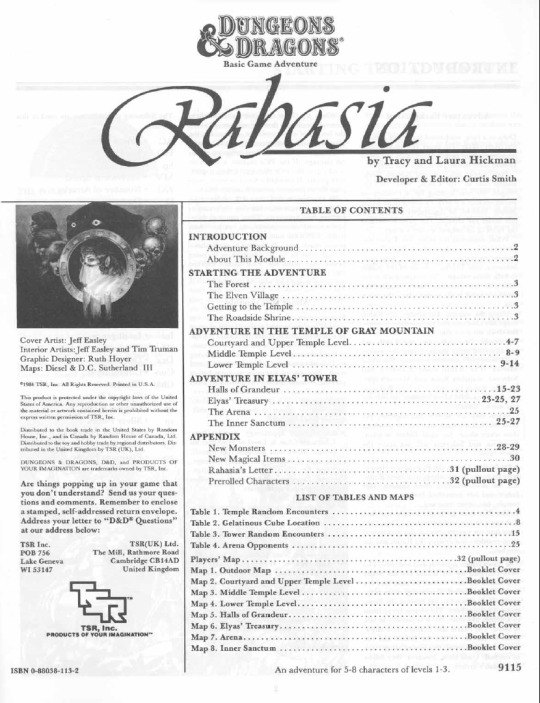
This graduation of Rahasia to the level of "proper module" is natural taking into account the success of the Hickmans' previous modules, such as Ravenloft and the ongoing Dragonlance, and is well deserved.

With a fresh lick of paint and illustrations by masters Jeff Easley and Tim Truman, this refurbished version of a module that started its life all the way back in 1979 as an off-brand (DayStar West) module for D&D is finally given its rightful place in the canon of modules. You can look back at posts 191 and 195 in this timeline to see the original RPGA modules in all their glory, or all the way back to post 69 (nice) for the DayStar version!
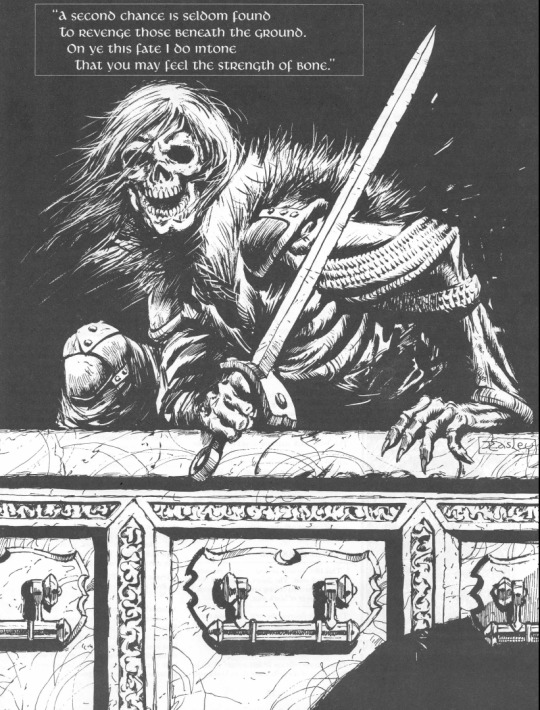
#adnd#dnd#ttrpg#ad&d#d&d#dnd art#dungeons and dragons#dungeons & dragons#tracy hickman#laura hickman
10 notes
·
View notes
Photo



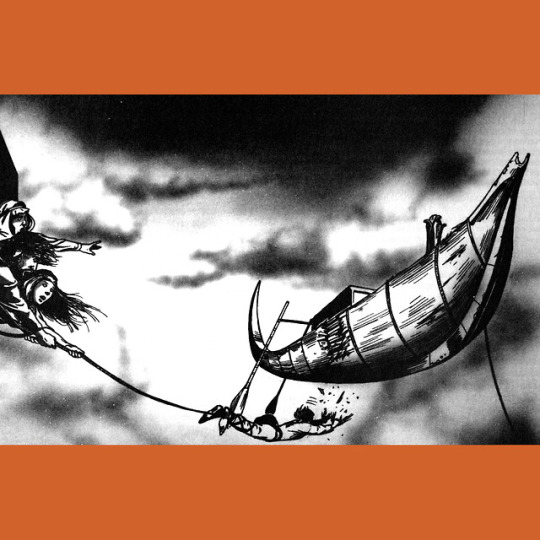
Pharaoh! Largely considered to be one of the best D&D modules, for good reason.
This is an example of how a long development and lots of playtesting can be seen in the end product. The Hickmans originally wrote and published the module privately, running it for local groups in ‘77. Pharaoh was then retooled in 1980 for Daystar West, a small press that published D&D supplements. The TSR version surfaced in ’82 – the Hickmans sold it to the company to recoup losses from a failed business. TSR liked it so much that they hired Hickman and made I3 – Pharaoh the start of a trilogy of modules.
The main portion of the module (there’s a lot of secondary material, all worth checking out) deals with the ghost of a once greedy pharaoh doomed to wander the desert until someone plunders his thief-proof pyramid (it is unusual to encounter a D&D module with a clear moral to the story, let alone one that seems so clearly anti-capitalist).
The pyramid is tightly designed with a multitude of clever traps and encounters. Pharaoh boasts one of the best module layouts up to that point, with clear and concise descriptions of every room. There are also a number of side view maps, which I find both helpful and delightful. Jim Holloway, whose work sometimes leaves me cold, is on point here, with lots of punchy illustrations and a fantastic cover painting. I love the spectral pharaoh with the empty headdress.
If you have the chance to grab this, definitely pick it up – even if you don’t run it as is, you can use it to fill your own games with traps for months.
Join our Patreon!
#RPG#Tabletop RPG#Roleplaying Game#TTRPG#D&D#dungeons & dragons#TSR#tracy hickman#laura hickman#Pharaoh#Desert of Desolation#Jim Holloway
62 notes
·
View notes
Text


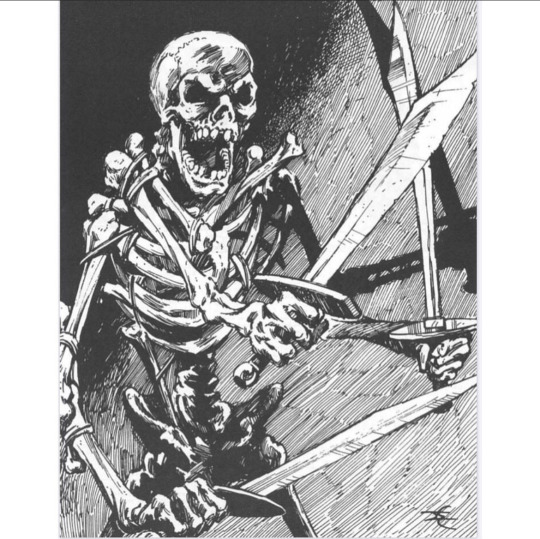

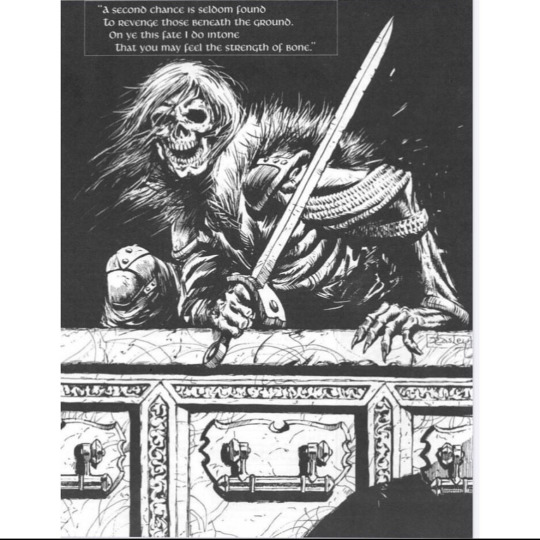


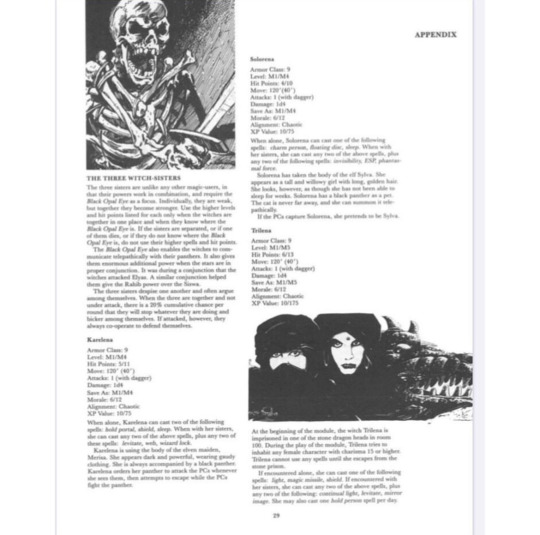

Module B7, Rahasia, by Tracy and Laura Hickman with art by Jeff Easley. This is one of the first modules they wrote together. Selling it to TSR, ultimately secured Tracy a job with the company.
In it, an evil cleric has kidnapped some eleven maidens and the adventures must get them back.
What sets this adventure apart from its predecessors is that players can employ role playing and strategy rather than resorting to copious amounts of combat to achieve the objective.
2 notes
·
View notes
Text
tracy and laura hickman: strahd von zarovich may be handsome but he's immensely cruel and evil. he is, and always has been, a creepy, jealous, power-hungry asshole, and has proven time and again that he will not change even for love, because he's just a gross, bad person. and that's what makes him a scary villain
every single d&d player who has ever seen strahd von zarovich: ✔ read 4:15 pm
#piri.txt#i love this. i love that we all universally just went 'cool cool. anyway i roll to seduce strahd'#this is our hill to die on and die we most certainly will but boy howdy what a way to go
7 notes
·
View notes